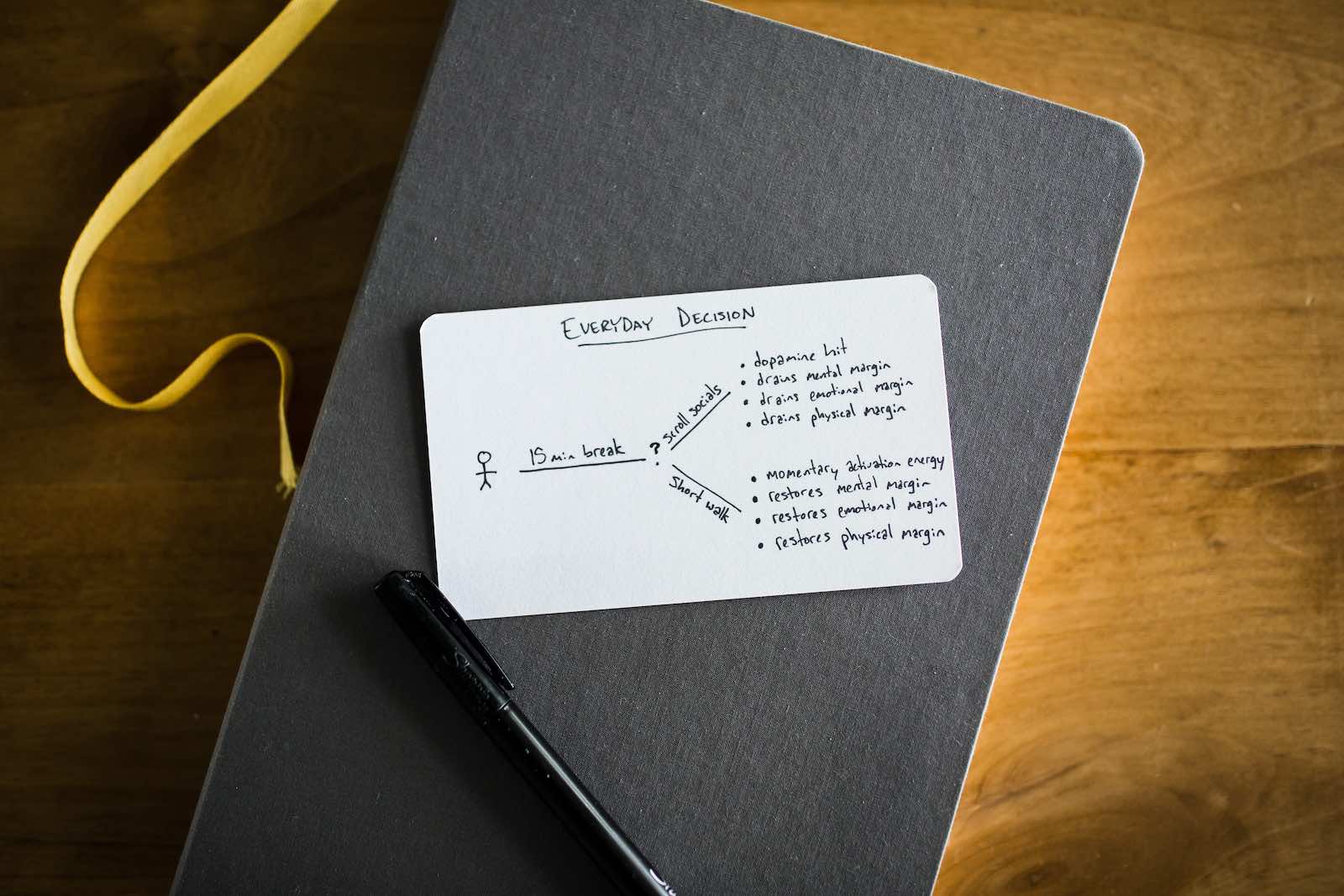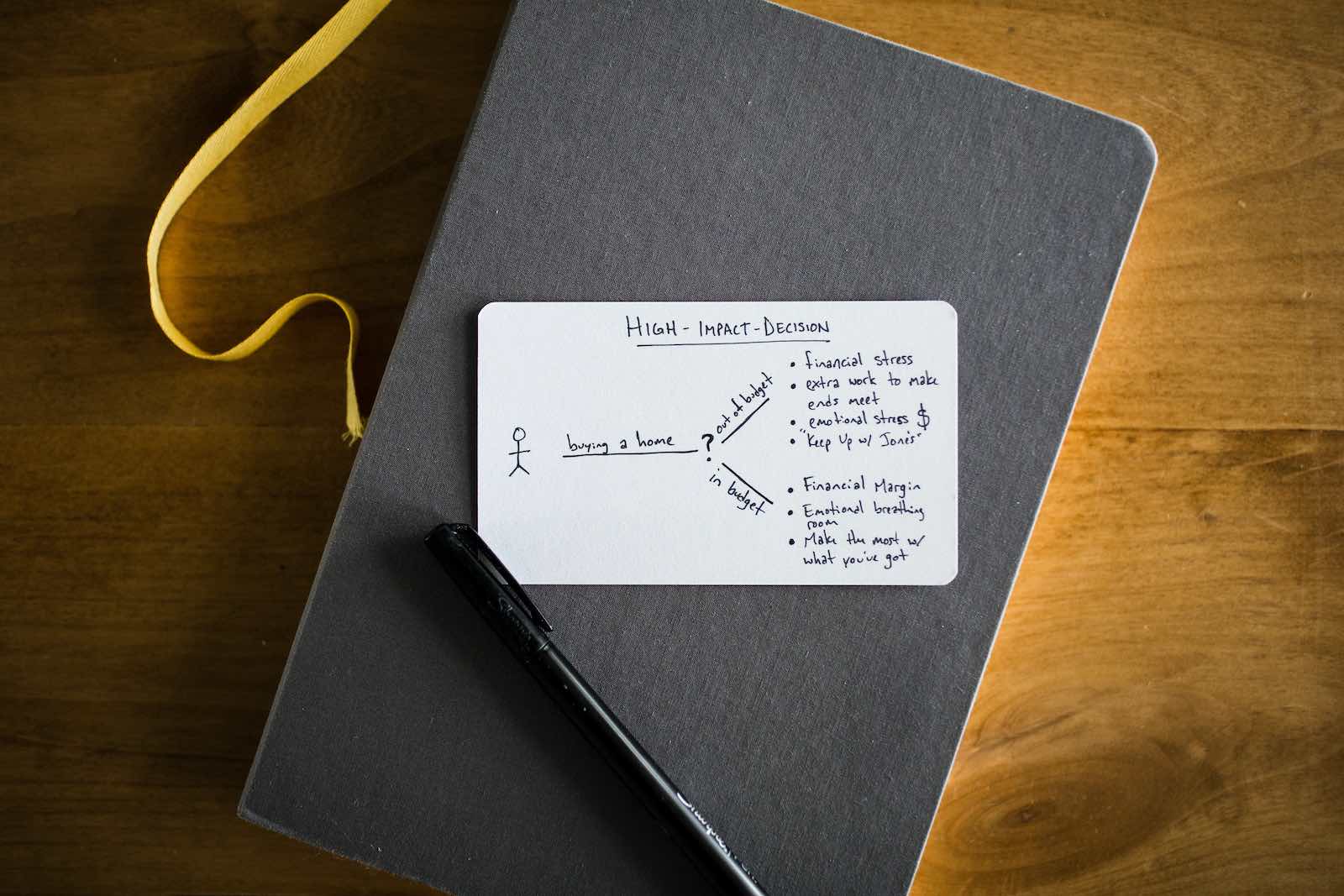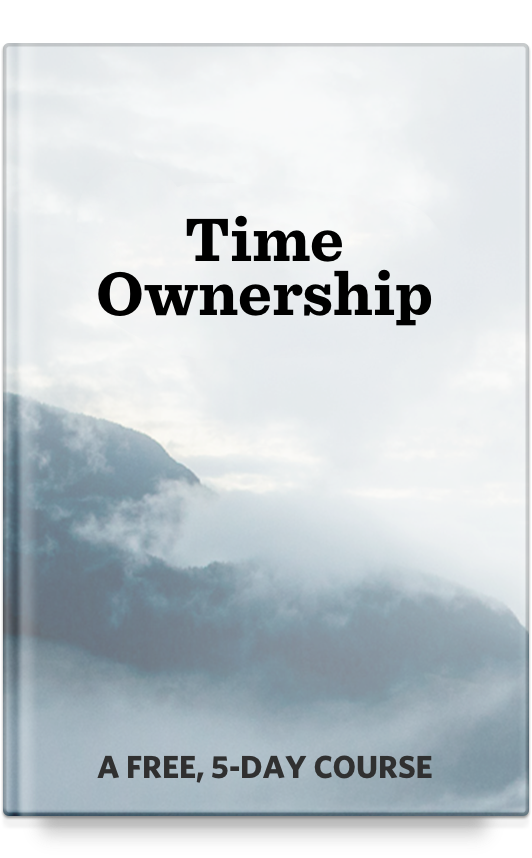Making a decision for margin is more tangible than you might think.
For a topic that can be hard to wrap the brain around, it is possible to eventually see margin in every day life.
At the end of the day, the question everyone has is how do I get some margin back?
If margin-less living has become the norm (and society as a whole is only ever going to take margin, not give it), how do we go about the counter-cultural process of restoring margin?
The first step toward margin starts with recognizing trade-offs. Then, it’s about making a choice.
While you may not be able to measure the exact ROI of every decision, the choices we make on a daily basis add up to a life with or without margin.
Decision Making & Margin
So what is a trade-off?
A trade-off is the inherent cause-and-affect of any choice we make. I choose to stay up late, therefore making a trade-off of sleep for entertainment.
Trade-offs are not necessarily a good or bad thing. Trade-offs are the outcomes. If I choose to speed, there is a good possibility of a speeding ticket. The choice for regular exercise results in increased energy and higher quality sleep.
While trade-offs may not be good or bad in themselves, they always have an impact. Of which includes margin.
Everyday Decisions

The process by which we restore (and maintain) margin is a result of a series of everyday decisions. These everyday decisions are things like what sort of food we will eat, or what sort of activity we engage in a moment of down time, or what time we go to bed. These have small implications in the moment and as it pertains to trade-offs, but in aggregate they have a significant impact to our margin areas.
Going out for a coffee once a week has minor financial impact on a monthly budget. But, buying coffee out every morning during the workweek adds up to a significant amount over the course of the month. A small daily decision can add up to a large budget item at the end of the month if we don’t give it some thought.
This small but significant principle applies to a wide variety of activities. Something sweet after one meal per week or every meal. A quick check of social feeds once in the morning and once at night or every hour. Leaving a dish on the counter verses taking the one minute to put it in the dish washer.
Many of these small decisions seem somewhat trivial or even silly, but when you look at the affects of those decisions over the course of a month, a year, or a decade, they suddenly seem to matter a lot more. Especially when it comes to margin.
Everyday decisions are the small choices made daily that impact margin over time.
But the other category of decision making is less frequent choices with lasting and repeating effects in multiple margin areas.
High-Impact Decisions

High-impact decisions are less frequent than everyday decisions but have a lasting and compounding effect on margin.
These are the decisions that can restore big chunks of margin in a hurry, but the opposite is also true. Decisions in this category can burn through breathing room faster than you can say “margin.”
High-impact decisions are choices that affect multiple areas of margin in an ongoing manner. Things like…
- Buying a home
- Signing up for a race
- Career changes
- Starting a family
- Evening/morning routine
- Dietary philosophy
Let’s break these high-impact decisions down in two parts.
First is multi-margin. That is, the choice is going to impact multiple areas of margin as a result.
The experience of buying a home is much more than just a financial commitment. It is also emotionally and mentally draining. Not to mention time-consuming.
The second aspect of a high-impact decision is the ongoing or overall length of the commitment.
Let’s say you buy your new home with cash. Even still, there will be an ongoing financial commitment of making updates to the house and property. And depending on the property type, there may be extra or new household chores required.
When thinking correctly about high-impact decisions, they can be leveraged to significantly restore margin in our life. That is not to say there won’t be trade-offs involved. There is rarely an instance in which a high-impact decision is made without a lifestyle change. But, when we measure what is gained in margin verses what it cost us in change, the answer usually presents itself.
High-impact decisions may be less frequent than everyday secisions, but in the grand scheme of things they often result in restoring margin from crisis, or, keeping us out of crisis.
* * *
Prioritizing margin comes daily to the daily decisions. There are moments in which we can make a choice that will greatly impact the state of margin in our life — toward breathing or overload. But the first step toward margin is adopting a mindset of seeing every decision as a trade-off.
